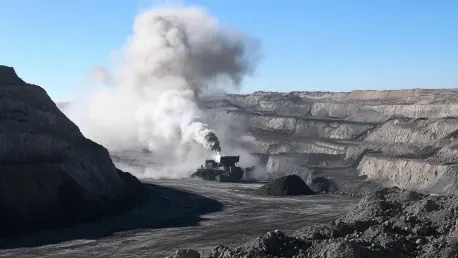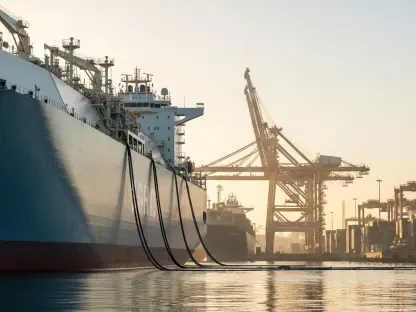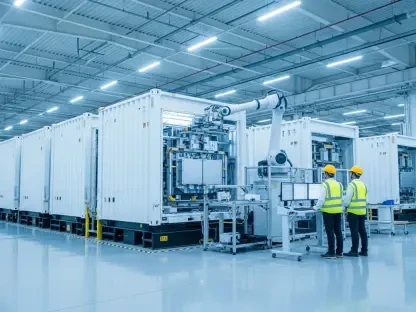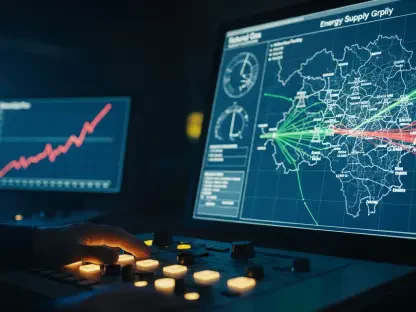Methane emissions from coal mines have recently come under scrutiny in Australia, with a notable focus on the Hail Creek mine in Queensland. This issue has gained considerable attention due to the significant discrepancies identified between the emissions reported by mine operators and those uncovered through independent investigations. Understanding the accuracy of these emissions figures is crucial in the wider context of global climate initiatives and mitigation strategies.
Discrepancies in Emission Reporting
Recent reports by the United Nations Environment Programme’s International Methane Emissions Observatory (IMEO) suggest that methane emissions from the Hail Creek mine may be significantly underreported. The IMEO’s findings indicate that the emissions are 3 to 8 times higher than those claimed by Glencore Mining, the mine’s operator, for the 2023 financial year. This considerable disparity raises serious questions about the reliability of the current methane reporting methods used by the industry.
Aerial surveys conducted by the University of Bremen in Germany revealed alarming methane plumes over the Hail Creek mine. These surveys, which took place in mid-2022 and late 2023, identified much higher emission levels than those reported by the mine. Glencore’s reported emissions for the year were significantly lower, thereby showcasing the potential flaws and inadequacies within the established reporting systems. This inconsistency highlights the necessity for a critical review of the methodologies employed in reporting emissions from coal mining operations.
Importance of Accurate Emission Data
Accurate reporting of methane emissions holds significant importance due to methane’s high global warming potential. Methane is over 20 times more effective at trapping heat in the atmosphere than carbon dioxide, making it a critical factor to address for achieving global climate goals. The Global Methane Pledge aims to reduce methane emissions by 30% from 2020 levels by 2030. For this pledge to be successful, precise data on methane emissions is essential.
The findings of the IMEO underscore the urgent need for more reliable and authentic measurements of methane emissions. If these emissions are consistently underestimated, it could severely hinder progress towards crucial climate mitigation efforts. Ensuring accurate data is not just about meeting international commitments but also about formulating effective strategies to address and reduce emissions, thereby contributing to the global fight against climate change.
Methods of Emission Measurement
The method currently used by Hail Creek, referred to as ‘Method 1,’ involves applying a generic state-wide figure to estimate methane emissions. Experts argue that this method is insufficient and advocate for a shift to ‘Method 2.’ ‘Method 2’ involves developing mine-specific models that take into account the unique geological and gas conditions of each mine, thus providing a more accurate estimation of methane emissions.
The push towards adopting more sophisticated, site-specific, and precise measurement techniques highlights the necessity for transparency and accuracy in emissions reporting. Independent verification via aerial and satellite-based observations can significantly enhance the credibility of the data reported by these mines. These advanced measurement methods have the potential to bridge the gap between reported and actual emissions, thereby paving the way for more honest environmental accountability in the coal mining industry.
Glencore Mining’s Response
In response to the findings, Glencore Mining has disputed the results of the UN-backed research. They question the credibility of the data due to the limited duration of the surveys and the outdated information that was used. Glencore argues that the brief aerial surveys implemented do not present a comprehensive view of the mine’s operations and emissions, suggesting that more extended and continuous research would yield different results.
Despite Glencore’s rebuttal, independent experts maintain their stance on the validity of the findings. They argue that although the surveys conducted were brief, they still provide significant insight into the extent of potential under-reporting and the flaws within the current estimation methods used by Glencore. This tension between the operator’s claims and independent findings demonstrates the need for a more standardized and transparent approach to emissions reporting in the mining industry.
Expert Opinions and Broader Implications
Researchers like Dr. Jacob Borchardt and Dr. Stephen Harris consider the findings indicative of broader issues in methane reporting from coal mines. They argue that the discrepancies observed at Hail Creek are likely not isolated cases and that similar under-reporting can be expected at other mines as well. These researchers call for the adoption of more advanced, site-specific measuring techniques to ensure accurate and reliable data collection.
The accurate reporting of methane emissions is critical not only for meeting international climate pledges but also for gaining a true understanding of the environmental impact of coal mining. The findings from the Hail Creek mine have broad implications for the role of the coal mining industry in climate change. They underscore the urgent need for improved emission estimation methods, which are vital for both environmental accountability and effective climate change mitigation.
Bridging the Methane Reporting Gap
Methane emissions from coal mines in Australia have recently been a major point of concern, particularly focusing on the Hail Creek mine in Queensland. This scrutiny has intensified due to the significant discrepancies found between the methane emissions reported by the mine operators and figures revealed through independent investigations. The accuracy of these methane emission figures is of paramount importance in the broader context of global climate initiatives and mitigation strategies. Accurate data on methane emissions is essential for developing effective approaches to stave off the impacts of climate change. This issue also highlights the need for stringent regulatory oversight to ensure that mining operations are transparent and accountable for their environmental impact. Coal mines are a considerable source of methane, and underreporting emissions can severely undermine global efforts to combat climate change. Thus, addressing these discrepancies is not only vital for Australia’s environmental policies but also for its commitment to international climate goals.









